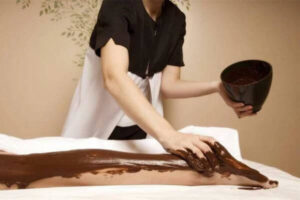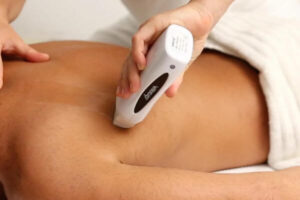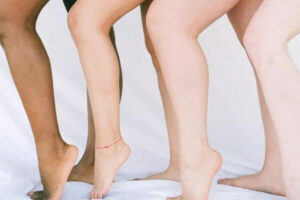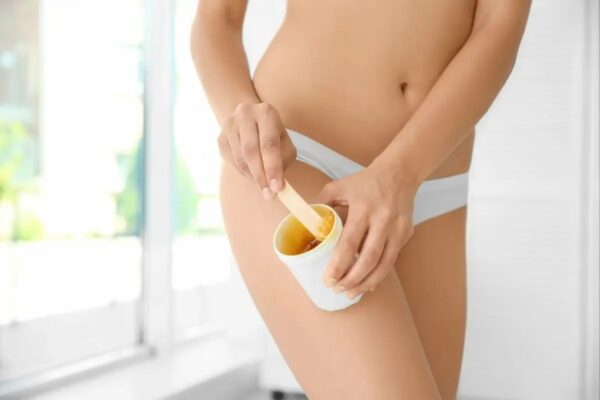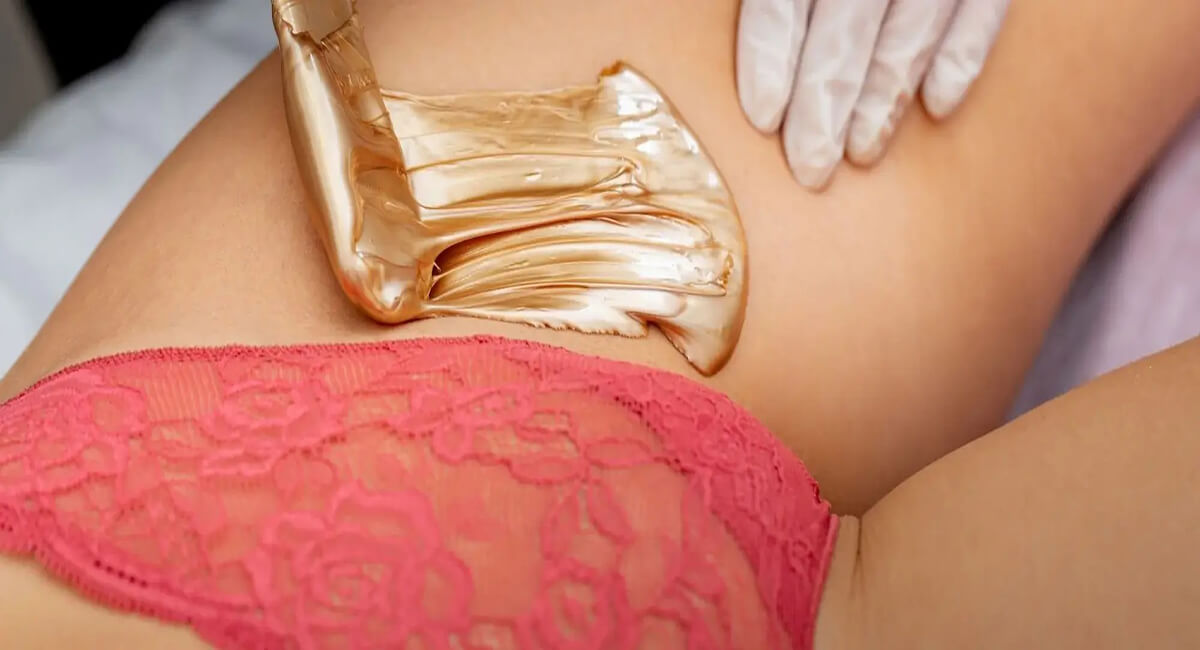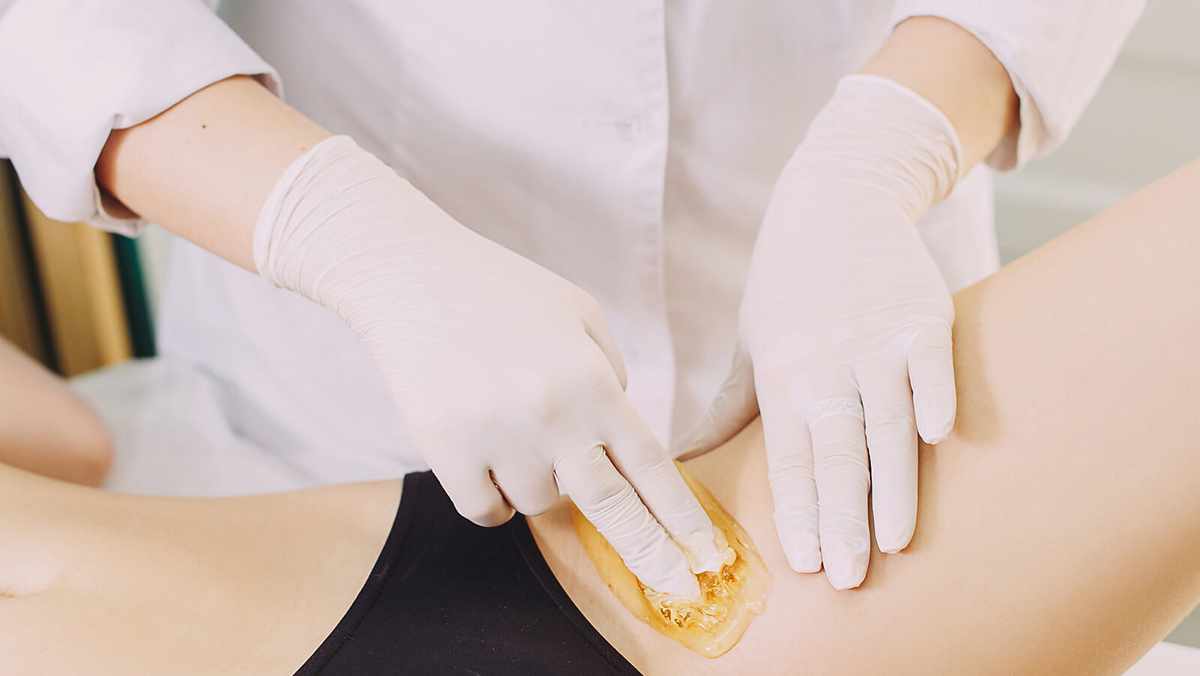Hair removal treatments are currently available on almost any body part, and waxing can cover large areas of skin in one session. Hard Body Waxes are usually reserved for treatments with more sensitive skin, pulling hair without sticking to the skin. In this category, Brazilian waxes are gaining popularity among seasoned salon-goers, which is no surprise when you consider it a quick, clean way to treat one of the most elusive areas of body hair.
Now, all wax treatments ensure long-lasting results, but each part of the body is different in how long the skin can stay smooth before the hair starts to grow back. When it comes to Brazilian waxes, it’s especially important to know your hair’s regrowth rate. Booking a waxing appointment too early can lead to more problems, and the intimate area is already prone to soreness if you don’t add the wrong waxing session.
1. What is Brazilian wax?
Brazil is known for its many hair removal techniques and methods. In 1987, seven Brazilian sisters opened a salon in New York that specialized in pubic hair removal. They offered the hair removal technique that only leaves a thin strip of pubic hair at the front. This became popular among celebrities and fashion enthusiasts alike and, thus, the Brazilian wax services that people know today were born.
Like many other modern procedures, Brazilian waxing has flourished thanks to relatively new trends, notably the standard that spread around 2010 that encouraged women to trim the hair around their genitals or keep it completely bare. Brazilian waxing refers to waxing that removes all body hair from a person’s private parts. You get waxed all the way from your pubic bone to your buttocks, sometimes including the bikini line from the beginning of your thighs down to just below your belly button. Some salons perform Brazilian waxes that leave a clean triangle of hair on the pubic bone, unlike those that remove all hair.
A Brazilian wax is usually based on the client’s preferences. People can choose to specify how much hair to remove, and whether to leave specific areas untouched. Estheticians and salons also tend to go a step further, offering different options and treatments to help clients decide.
I remember that I had a friend who was an MCC panel manufacturer. A few years ago she went to Brazil on business and experienced a professional Brazilian waxing service there. She said that the waxing service was very comfortable and beautiful, and it was an unforgettable experience.
2. Something you need to know about hard and soft waxes
When we talk about waxing in general terms, soft wax probably comes to mind. They have a honey-like texture and are suitable for large areas of skin such as the back, arms, and legs. They’re also ideal for time-savers in areas with overly thick hair.
The beautician applies soft wax with a spatula, and after a few seconds, presses the waxing strip onto the cooled wax and pulls quickly against the direction of hair growth to remove all hair. This can be uncomfortable for clients on the first few tries, but it quickly becomes more manageable.
Hard wax follows more or less the same process. The main difference is that beauticians do not use waxing strips to remove wax from the skin. Also, the wax has a slightly thicker consistency after melting; this makes it easier for the beautician to get a firm grip on the wax strip.
Hard wax works best on narrow areas where the skin is more sensitive, such as all parts of the face, pubic area, pleasure tracks, rest of the bikini line, etc. In short, they are ideal for Brazilian waxes.
3. Which is better, soft wax or hard wax?
If you’ve worked in the hair removal industry, you’re probably familiar with the main characteristics that differentiate soft waxes from hard waxes. Beauty salons often offer several versions to better suit client preferences, so you won’t be left without options. Both soft and hard waxes have advantages that make them work during Brazilian treatments, but there are also benefits that help one over the other to ensure a smoother process. Let’s look at each of them individually:
- Soft waxes: These are designed to remove a lot of hair without wasting too much time, so they come in handy on areas with particularly rough hair. Some formulations offer many advantages for the most sensitive areas of the body, such as low melting points and a creamy consistency that feels comfortable on the skin. Soft body waxes are easier to handle, so accidents are less common, but this can change when applied on delicate/thinner skin like the inner thighs and pubic area.
- Hard waxes: Because they grip the hair without sticking to the skin, hard waxes are gentler on sensitive areas. This reduces the chance of skin breakouts, and their low melting point makes burns less likely to occur. While neither wax is particularly dangerous when used in Brazilians, hard wax is the best choice for efficiency without compromising client safety. Some additional advantages include:
- They can grab shorter hair without stressing the skin (though, the longer the hair, the better the chance of a smooth finish).
- They are better suited for fine areas where precision is critical.
- Once the technique is mastered, its consistency leaves a pleasant sensation on the client’s skin.
4. What makes hard wax popular for intimate hair removal?
Along with the face, the bikini area is one of the body parts that respond perfectly to hard wax. For this reason, hard body waxes are considered the best choice for Brazilian waxes, even if softer waxes have been branched out to better suit sensitive skin. Here are the main advantages of using hard wax for Brazilians:
- Hard wax can be removed without waxing strips, so it’s easier to be precise when there’s little room to move. If the beautician uses a full bikini wax, it also helps the beautician be precise when treating hard-to-reach areas.
- They have a low melting point, so they don’t need to be too hot when they come in contact with the skin.
- They adhere to the hair rather than the skin, reducing pain for customers when removing the wax layer.
- It also means the wax can be used multiple times on the same area without breaking the skin.
- Hard wax has a pleasant, creamy texture and doesn’t leave any sticky residue.
That doesn’t mean soft wax is impossible. Soft waxes will still help remove coarse, stubby hair, and as we said before, there are soft waxes with low melting points that can be used on sensitive skin. If the label specifies that a professional body wax can be used on the pussy/bikini area, you can always offer this option to your clients, which is always welcome for someone familiar with the hard body wax price range.
Of course, you should always test brands and make sure your skin reacts correctly. It is always easier to find a wax dealer you know well. Likewise, it’s safer to try new products from brands that have had positive results in the past.
5. Necessary supplies for a Brazilian wax
In terms of the supplies needed for the process, Brazilian wax doesn’t look too different from other wax treatments, but depending on the wax formulation you choose for your treatment, you may want to use different supplies. Also, intimate areas always require the highest quality products to prevent infections and other unpleasant side effects. Here is a list of the supplies you will need to make a successful Brazilian wax:
1) Wax
We must start with the most important element of any wax session. You can’t afford to have inferior wax products applied to the most sensitive parts of your body. Hard waxes are great for soothing sensitive areas and can be removed without tugging at the skin. When working with Brazilian waxes, you need to have a wide variety of hard waxes in order to meet the expectations of your clients. Waxes are only as good as the ingredients in their formula, so you should know your wax products before you start using them on other people. It’s important to make sure at least some of your waxes have a low melting point; it goes without saying that burns can have disastrous aftereffects when one’s private parts are involved.
2) Applicator
Also known as spatulas, they will help you manage the wax as you apply each layer to the area. For precision when working on small areas, wax applicators are available in wood or metal. In contrast, a few shapes can help you save time while covering large areas of skin. When working on the Brazilian, you can use the spatula yourself to make sure the wax is evenly distributed over all the different contours and angles.
3) Skin cleanser / antiseptic lotion
These lotions stop infections from showing up while the pores are still open and vulnerable. Make sure the formula contains antibiotics to kill germs and germs before they have a chance to attach to the skin. You need to cleanse your skin properly before and after waxing, especially if you’re using a sticky wax formula.
4) Wax heater
A professional wax warmer is your best resource for avoiding burning your skin during a session. They’ll add a layer of precision that regular microwaves can’t get, which will ensure the wax is always the ideal consistency for hair removal without resistance.
5) Soothing lotion
Without a soothing solution for post-wax skin, your clients will experience irritation, itching, and burning sensations that take longer to subside, especially when you consider that a person’s private parts are All friction occurs for a given time. Newly waxed areas are also more prone to swelling and redness. Soothing Lotion and Cooling Gel provide a refreshing sensation, relieving most remaining pain while providing multiple nourishing properties to aid in the skin’s healing process.
Now, even the most delicate products and accessories can go wrong if you don’t take the proper precautions during your Brazilian waxing session. We’ve detailed what these supplies are for and the proper way to use them, but there are other tips you’ll want to keep in mind to ensure the most satisfying results: Your business should ban double dipping and other unsanitary practices.
While some licensed spas allow some tolerance of their double dip policy to save time and money, you should never get into the habit of dipping your spatula into the wax pot after using it on your skin. You’re only increasing your chances of getting an infection in such a sensitive area. You need to constantly sanitize your workstation and sanitize your products after each session. Organizing your waxing kit so everything is easily accessible is also important.
Because they grab the hair and not the skin, it’s okay to apply hard wax multiple times to the same area, but you should still hone your technique beforehand. Brazilian waxes are one of the longest wax treatments available and they require great precision in areas with little room to work. If you miss too many hairs, the nutrients in the wax product won’t be enough to keep the pain to a minimum. Drops of blood are not uncommon, especially for beginners, so there’s no need to panic when some blood vessels are torn during the process. It’s important to be careful during post-wax treatments to avoid infecting the skin, though.
If your client is a first-time Brazilian, make sure to list all aftercare restrictions before you begin: no exercise or other physical activity for at least 48 hours, wear loose clothing to allow the area to breathe, avoid unnecessary friction, do not Take a bath or drink hot water, and take a vitamin-enriched skincare routine.
6. Tips for the Brazilian wax
Your safety should always come first, especially when it comes to intimate waxing. So, don’t be afraid to ask questions before diving into the world of Brazilian waxes. If you want to know what to expect, ask your esthetician, dermatologist, or other clients you know. This can also help you determine if a service is not following proper sanitation guidelines and identify when a beautician is not doing their best to create a safe, enjoyable environment.
Here are some helpful tips:
- At least 1/4 inch of hair should be allowed to grow.
- Brazilian waxes should be left to professional beauticians. When you book professional services, you can be assured of precision treatment in your own hard-to-treat areas. This will also give you the opportunity to relax and minimize any discomfort, as your beautician will always have your health in mind.
- While waxing, a licensed salon or spa should maintain the highest standards of hygiene at all times. Your beautician should always wear latex gloves, use only pre-sterilized tools, and avoid repeated dipping.
- Wash the area ahead of time, not before waxing. You don’t want any soap or product residue that could clog your pores. Likewise, avoid sweating or overtiring on the way to your appointment.
- If this is your first Brazilian wax, be mindful of your schedule. Waxing has a 48-hour healing period, and the skin can be especially fragile after the first exposure to wax. Make an appointment at least a week after your period ends to make the treatment less painful, and choose a date with low activity during your period so you can give your skin a rest without unnecessary friction or sudden temperature changes.
- You will receive an after-wax treatment immediately after your Brazilian wax, and you can continue to soothe the skin yourself with cold compresses over the next few days. Many post-wax lotions you use for other treatments may not be the best choice for such delicate areas, so pay attention to your esthetician’s recommendations for post-wax skin care.
7. How often should I get a Brazilian wax?
The answer to this question depends on how well you know the waxing regime. Expect most people to wait 3 to 6 weeks after their first Brazilian wax before making a new appointment. Most people can easily adhere to the 3-week waiting period after that.
Now, can you wax every 3 weeks without changing your schedule? You will need to monitor your skin after each session. Like all professional wax treatments, Brazilian wax treatments are long-lasting, extending the time between treatments for regular clients.
The hair gradually begins to thin out, and some follicles stop growing altogether, so people have less hair to deal with and more time between treatments. The waiting period is usually 3-4 weeks, depending on factors such as a woman’s menstrual cycle or the amount of new hair growth.
In the end, you can wait longer or schedule an earlier meeting, but in all cases, you’ll want to make sure your hair is at least 1/4 inch long. If you try to wax the area when your hair is short, you can damage the skin and increase the chance of ingrown hairs.
What’s more, you may disrupt the hair regrowth cycle set by previous waxing sessions. In the end, no one knows your hair regrowth rate better than you, so it’s no use basing your hair removal regimen on someone else’s experience. Depending on how the skin reacts to the wax, the time between waxing sessions can be changed.
8. Conclusion
Brazilian waxes come with many benefits, but they also require a lot of care and a lot of skill. Auperwel offers the best wax formulations to complement your technique for treating sensitive areas like the bikini line, labia, buttocks, and more. From Cotton Oil to Argan Oil, our line of waxes combines the finest ingredients with plenty of vitamins to preserve skin’s natural softness.
Our products have antioxidant and moisturizing properties to protect the skin after waxing, and high elasticity to simplify your work during intimate waxing sessions. To experience the full range of products we have to offer, check out our Professional range so you can always have the most refined combination of skincare benefits and powerful hair removal power to suit all client preferences.
How useful was this post?
Click on a star to rate it!
Average rating 5 / 5. Vote count: 1
No votes so far! Be the first to rate this post.
